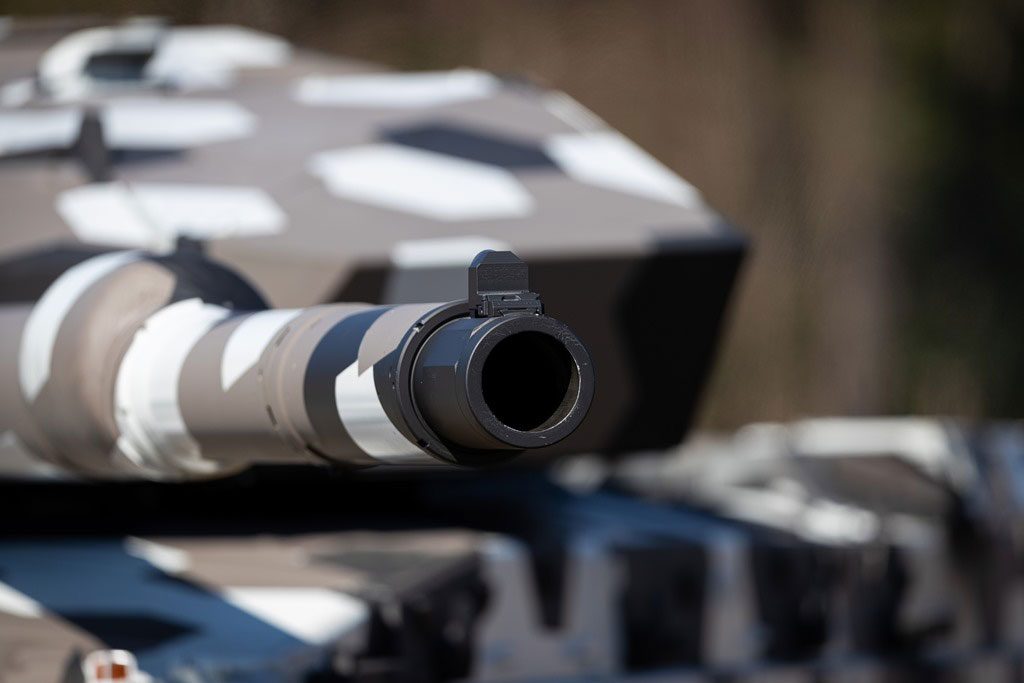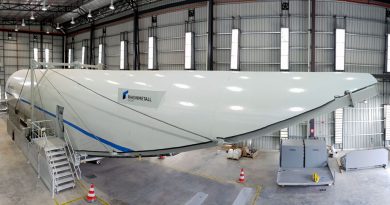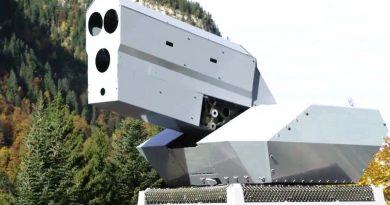
Why 130 mm and not a bigger calibre?
While in the interim Rheinmetall aims at improving 120 mm performances, looking further ahead in 2016 the company exhibited in Paris its 130 mm solution, showing both the gun with a 6.6 meters long barrel, and the related APFSDS ammunition, which of course raised considerable interest. This solution does not has yet an endorsement by a potential customer; the “130” magic number is thus not the result of a requirement, but comes from a thorough analysis led the Düsseldorf-based group to orient itself towards a new calibre, and it is being proposed for the Main Ground Combat System (MGCS), or at least for its heavy armed variant, the MGCS encompassing more than one effector.
“When in 2016 we exhibited our firing demonstrator we declared that the 8% in calibre increase would have led to a 50% in performances increase,” Christoph Henselmann points out, “our aim being to bring to the target at least 50% more energy than current 120 mm rounds.” Since that date, he explains, Rheinmetall developed an expert tool that allows taking in count 50 parameters, three of them fixed, the remaining 47 variable. A tank gun is not a stand-alone system and it must cope with a series of system constraints, that in the end make the design work what Mr. Henselmann defined “an optimisation of technical compromises,” clarifying that the assumption “bigger is always better” is not in fact true.
The two key parameters for effectiveness are the aforementioned energy that reaches the target, and the accuracy at a specific combat distance, the latter requirement for future MBTs being the double compared to current tanks, so it will be necessary to hit a target with utmost accuracy at 5 km distance. A nice challenge especially on moving targets, as the flight time will be nearly the double. Among limiting factors for the gun we find i.e. weight, in the future the aim is to have systems not exceeding the MLC60 class limit, as well as turret protection, which is required against 125 mm APFSDS rounds. “Three system interface of major importance are the turret ring diameter, the recoil force and the barrel length,” Mr. Henselmann says, the diameter influencing the vehicle width and the trunnion position, the recoil forces has an impact on many aspects of the tank, not least the weight, and might bring to the use of a muzzle brake “the muzzle brake being not an advantage if you aim at optimising the accuracy of the weapon,” he underlines. As for the barrel length the most obvious impact is on the vehicle mobility, while on the gun side it influences many aspects among which the recoil force, the hit probability, the unbalance of the weapon system, the achievable muzzle energy and gas pressure. “As the result of our simulations, we carried out over 1,100 of them which considering three fixed and 47 variable data brings to over 55,000 data used for assessments, that among other showed that not all calibres fit to every barrel length.”

Christoph Henselmann states that following the R&D work done, it is quite clear that in the next 20-25 years the APFSDS round will remain the ammunition of choice for tanks against tanks firefights. “The subcalibre will stay as the best option, as it reaches the target very quickly, it is extremely accurate and the only way to defeat it is by physically destroying it.” While this is true, the APFSDS concept is far than optimal as less than 20% of the energy generated in the chamber will reach the target, he explains. Gas heat loss represents 72% of the energy loss, sabot mass 9% (for a 120 mm round) while air drag accounts for a further 3%, which means that only a mere 16% of the chemical energy generated in the chamber is brought to bear on the target. “We must therefore look at what we can optimise, and the gun calibre itself, when talking of penetrators which have a diameter of 20-30 mm has a minor importance, and by the way increasing the calibre means increasing the sabot mass, adding therefore to the loss of energy,” he explains.
He also stresses that what has to be optimised is the chamber volume, which led to the 50% increase compared to the 120 mm in the first 130 mm demonstrator. According to Rheinmetall analysis, Depleted Uranium (DU) rounds, which have an edge in current energy scenarios mostly thanks to their selfsharpening shearing capability, have reached the limit, and with the increasing energy, what Mr. Henselmann referred to as the “10 MJ scenario”, the situation should reverse with an advantage for tungsten penetrators over DU ones. It is to note that Rheinmetall aims at reaching 13-14 MJ impact energy with the 120 mm APFSDS rounds currently under development. An interesting note is that he admits that neither of the penetrators, Tungsten and DU, have been tested against the latest Russian Relikt explosive reactive armour, which apparently detonates on radar command before being hit by the incoming round.
Photos courtesy Rheinmetall


